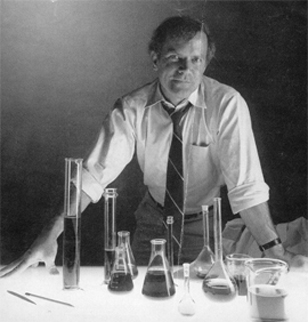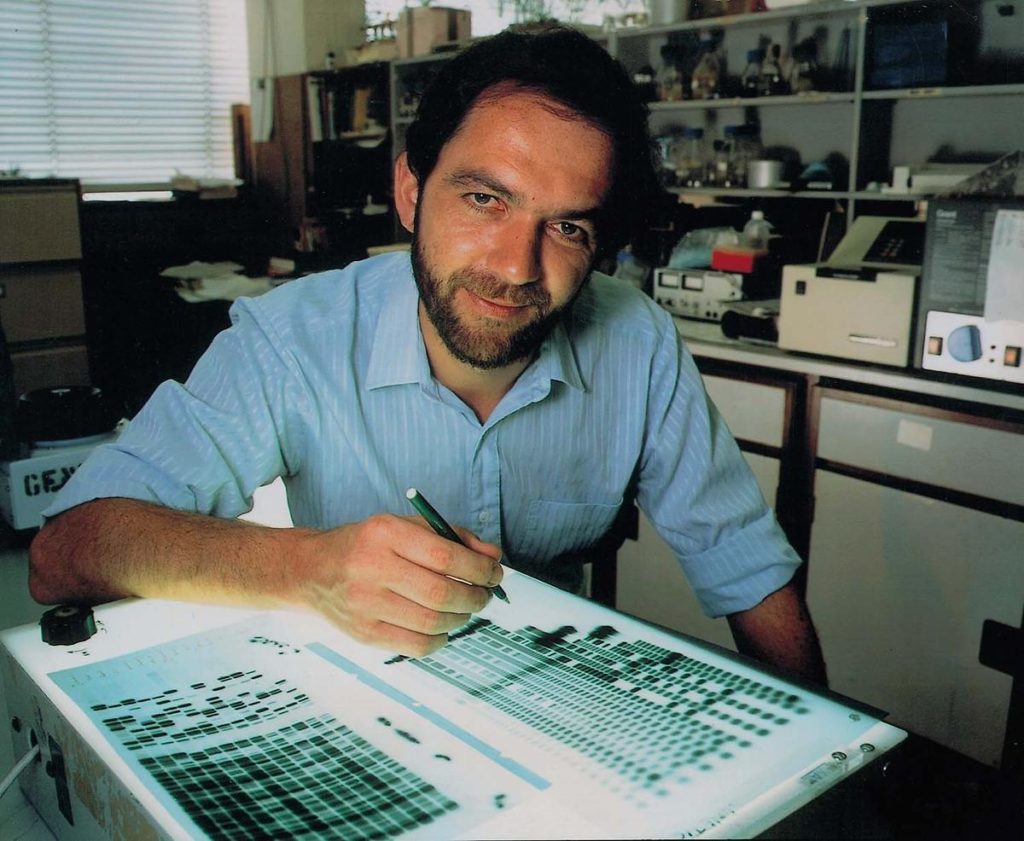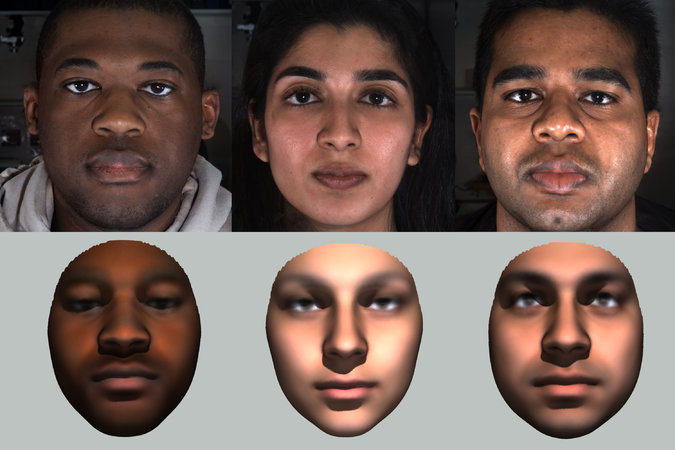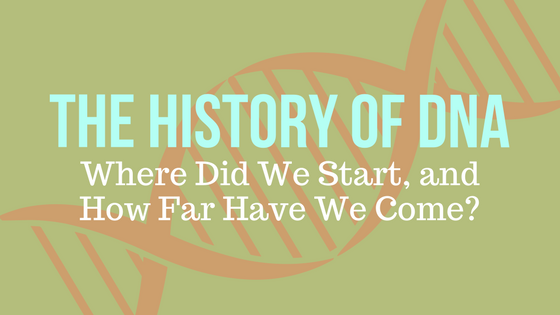Tomorrow is DNA Day! To celebrate, we’ve put together a history of DNA throughout the years. Keep reading to see how far the field has come!
Written by: Tara Luther, Promega
1983 – Kary Mullis discovers PCR process
PCR (Polymerase Chain Reaction) is a quick and easy way to create unlimited copies of DNA from one original strand. Prior to the invention of PCR, gene cloning, sequencing of complex genomes, DNA fingerprinting, and DNA-based diagnostic methods were either inefficient or impossible.
Kary Mullis invented PCR while working for Cetus Corporation, where he was tasked with synthesizing oglionucliotides for groups working on methods to detect point mutations in human genes. While on a drive, Mullis conceived PCR as a way to copy DNA and synthesize large amounts of a specific target DNA, though it took another two years to refine the technique. Mullis received the Nobel Prize for his invention in 1993.

1984 – DNA fingerprinting is born (Sir Alec Jeffreys)
As a lecturer in Genetics at the University of Leicester, Sir Alec Jeffreys studied DNA variation and the evolution of gene families. He had a goal of tracking genetic markers in the DNA of people and their relatives to discover inheritance patterns for illness and disease. While looking at x-ray films of DNA, Jeffreys realized that DNA patterns for each individual appeared to be unique (with the exception of identical twins). Understanding the implications his discovery had on the field of forensic science, he obtained patents for his discovery in 1984 and published his findings in the journal Nature in 1985.

1986 – First criminal case solved in UK through use of DNA fingerprinting
In 1983, 15 year-old Lydia Mann was raped and murdered in the UK. Forensic examination of a semen sample showed that it was a type found in only 10% of men, and was from someone with type A blood, however no suspect was found. Three years later, another 15 year-old, Dawn Ashworth, was found similarly assaulted and murdered. Semen samples showed the same blood type.
Richard Buckland, a 17 year-old with learning disabilities, had been seen near Dawn Ashworth’s crime scene and knew unreleased details about the body. He confessed to murdering Ashworth, but his blood sample did not match what had been found at the scene.
The first mass DNA screening took place in 1987 to find the real killer, though no matches were found. In August of that year, a man was overheard bragging about donating a sample on behalf of his friend, Colin Pitchfork, as Pitchfork had previous flashing charges. The police arrested Pitchfork in September of 1987, and determined him to be a match to the DNA profile of the murderer.
1990 – Cetus introduces the DQ Alpha Amplitype Kit
The kit was the first PCR-based DNA test kit and detected sequence variation at the Human Leukocyte Antigen (HLA) DQA1 gene found on chromosome 6.
1993 – Silver staining introduced
Silver staining allows for resolving and visualizing complex DNA profiles.
1994 – First fluorescent STR system is introduced
Labeling potentially overlapping PCR products with different colored fluorescent dyes allowed for the capability of simultaneously detecting STR alleles in the same size range.
1995 – Public awareness of DNA technology is heightened (OJ Simpson case)
At the time of the trial, DNA technology was so new that the prosecution found it necessary to explain what DNA testing was. Over the course of the trial, DNA testing played an integral role, and the highly publicized trial proved both the validity of DNA testing and the need for proper handling of the evidence.

1995 – National DNA database (NDNAD) is established in the UK
2000 – 16-locus multiplex kits introduced
In multiplex PCR kits, multiple regions are simultaneously amplified in a single reaction. This benefits forensic DNA typing, because less DNA material is required to gain results from multiple loci. Similarly, less time is required to obtain these results.
2001 – World Trade Center attacked – DNA used to identify victims
While DNA had played an important role in other mass fatalities, it would prove to be vital after an attack where other identification methods would be limited. Many public and private organizations played a role in helping to identify victims.
2002 – 10 years after Innocence Project founded, Ray Krone is the 100th person exonerated

2003 – US has 1,000,000 convicted offender DNA profiles in database
2003 – Start of Y-STR typing
As females don’t have Y chromosomes, their contributions to a sample are ignored during Y-STR analysis. This can be very advantageous when evidence samples contain only small quantities of male DNA.
2004 – First copy of human genome is published
The Human Genome Project was an international project with the goal of determining the sequence of nucleotide base pairs that make up human DNA, and identifying and mapping all of the genes in the human genome. The project began in 1990 and cost $3 billion.
2005 – Tsunami victims identified by DNA
In 2004, a tsunami struck Thailand, killing an estimated 5,000 people. The number of foreigners reported missing after the tsunami led the Thai government to ask for help from forensic experts from around the world.
2007 – The EU adopts as law the Treaty of Prüm
The Treaty was signed on May 27, 2005 and established a framework for cooperation among members in combating terrorism, cross-border crime, and illegal immigration.
2007 – 23andMe begins offering direct to consumer genetic testing
2007 – Orange County, California establishes a local DNA database
The database was initially comprised of DNA samples from people on probation as a condition of their probation. These samples can then be compared to evidence collected at crime scenes. The program expanded in 2009 to include all adults charged with a misdemeanor or arrested for a felony.
2010 – Phenotyping
DNA phenotyping is our attempt at replicating what our bodies do naturally: translating DNA into our physical appearances. It is an attempt because there is rarely a direct correlation between a single gene and a single physical feature. Forensic scientists are currently focusing on determining facial features. Much of our understanding has been gleaned from whole genome studies where scientists compare data from over 7,000 points on participants’ faces to sections of their DNA that contain single nucleotide polymorphisms (SNPs)—that is, sections of DNA that differ by a single letter of the genetic code. Comparing facial maps to genes allows scientists to calculate the probability of physical traits based on the presence of particular SNPs. Predictive algorithms are then used to render an image of a face based on those probabilities.

2010 – Familial searching solves Grim Sleeper case
It’s estimated that 80+ people have been murdered by the Grim Sleeper since 1985. He is the longest-operating serial killer west of the Mississippi. On April 21, 2008, California became the first state to make familial searches legal when the crime scene DNA profile is a single-source profile and where all other investigative leads have been exhausted. In 2009, detectives caught a break when Lonnie Franklin’s son, Christopher, was arrested and convicted in a felony weapons charge and swabbed for DNA. Detectives were alerted that his DNA was a partial match to DNA found at the Grim Sleeper crime scenes. Detectives then began investigating the son’s relatives and found a match in Lonnie Franklin.

2011 – Efforts begin to expand core loci
2013 – Supreme Court upholds DNA collection under fourth amendment
By a 5-4 vote, the Supreme Court upheld a Maryland law allowing police to collect DNA from those who are arrested without first getting a warrant.
2015 – Rapid DNA Acts of 2015 and 2016 introduced
The Rapid DNA Acts of 2015 and 2016 were introduced in the US House of Representatives and the US Senate in January 2015 and December 2015, respectively. The legislation modifies the DNA Identification Act of 1994, which requires that all DNA profiles uploaded to CODIS be generated in accredited laboratories. Under the Rapid DNA Act, profiles generated in booking stations on FBI-approved Rapid DNA devices may also be uploaded to the national database.
2016 – ISO 18385 published
ISO 18385, published in February 2016, is a new ISO standard for forensic products intended to minimize the risk of human DNA contamination during the manufacture of products used to collect, store, and analyze biological material for forensic purposes.
2017 – Core loci expanded to 20 genetic markers
WOULD YOU LIKE TO SEE MORE ARTICLES LIKE THIS? SUBSCRIBE TO THE ISHI BLOG BELOW!


